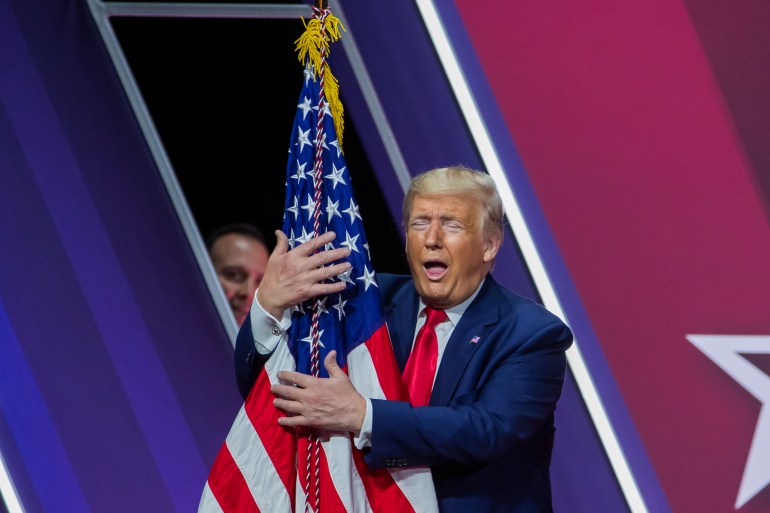The war on Chinese technology companies has been one of the most important features of the US-China confrontation since the administration of former President Donald Trump began classifying a number of Chinese technology companies as a threat to US national security.
Semi Conductors and their chips are the hub of the technological ambitions that the United States and China depend on mutually. All major Chinese technology companies depend on American chips, at the same time American companies cannot succeed and achieve growth without Chinese customers.
The "Interim Strategic Guidance for the National Security Strategy" document, issued by the incumbent President Joe Biden's administration in early March, focused on the growing Chinese challenge in the military and technological fields.
In the document, which referred to China 15 times, it was stated that there is great competition between the leading global powers in the development and diffusion of emerging technologies, such as artificial intelligence, quantum computing and semiconductors, and that rapid changes in technology will shape every aspect of our lives and our national interests. The technological revolution and its consequences are still unstable.
A hard-line approach
Many American commentators consider that the Cold War has already begun between Washington and Beijing, starting from the technological confrontation between them, and that the worst can only be expected in the coming years and decades.
Biden launched an initiative to review semiconductor supply chain resilience, pledging to rapidly rethink within its first 100 days the fate of its future trade and industry.
Biden is expected to disappoint those aspirants to ease the impact of the technological confrontation with China, as he is likely to push forward with an offensive policy that relies on attracting semiconductor manufacturers and suppliers around the world to switch to the United States, and denying China access to the industry's most advanced products, as China lags behind in This is a vital industry, and Washington is trying to prevent China from accessing the secrets of the semiconductor industry that its private companies do not know how to manufacture yet.
Semiconductors, which are very fine silicon wafers used in the electronic circuits of various electrical devices, industrial or those used in daily life, are manufactured in a limited number of countries.
Semiconductor technology is divided into 3 levels, simple, medium and advanced. Many countries produce the first two levels, while the third advanced and complex level of semiconductor devices remains under the control of a small number of companies in several countries.
China is leading the way in producing the first two levels, but lagging behind in the production of the third, which is more complex, accurate and more advanced.
At a time when China exports first-level semiconductors, it is forced to import most of its needs of advanced third-level semiconductors, which are irreplaceable in the production of advanced phones, complex mechanisms, aircraft, electric cars, a lot of memory and artificial intelligence programs, data central processing units, and processing units. Graphics.
China's exports of semiconductors from the first and second levels reached $ 101 billion in 2019, while its imports of level three semiconductors exceeded $ 300 billion in the same year.
The Taiwanese company TSMC owns more than half of the global production of semiconductors (Reuters)
The Taiwanese company TSMC has more than half of the global production volume, but at the same time it relies mainly on American technology for research and development.
South Korea comes second after Taiwan with 19% of the global market for the production of advanced semiconductors, the United States produces 8% of it, Japan 7%, and the rest of the world, including China, produces 15%.
Chinese companies lag behind their Western counterparts in advanced tier 3 semiconductor in terms of both design and production share.
For example, TSMC is now proceeding with the development of the production process for "3 nm" and "2 nm" chips, and it is expected that these chips will reach the market during the years 2024 and 2025.
Meanwhile, state-owned SMIC companies in China only started producing 14nm chips at the end of 2019, putting them at least two generations away from their leading counterparts in the United States, Taiwan and South Korea.
The complexities of technological interdependence
American companies still control about half of global semiconductor sales, though their technology leadership is mostly limited to research and design.
Due to economic viability, US semiconductor manufacturers have hired Asian giants in Taiwan and South Korea (Samsung) to participate in the productive supply chain process.
Recently, American strategists have begun to view this as a mistake that makes global semiconductor manufacturing dangerously concentrated in Taiwan and South Korea, even though they are close allies of Washington.
Trump persuaded TSMC Taiwan to transfer part of its manufacturing to Arizona (French)
Former President Donald Trump persuaded TSMC, a Taiwanese company, to transfer part of its manufacturing to Arizona, with an investment approaching $ 12 billion.
The latest US defense budget bill included providing federal financial incentives to build semiconductor manufacturing plants in the United States, and helping fund research and development in this vital area.
The Trump administration's sanctions against the Chinese company Huawei and other major Chinese technology companies prompted TSMC to refrain from exporting to China, which greatly affected the global supply chain, and China was the country most affected by these policies.
United front
Biden's approach to Chinese technology issues will be different from Trump's in at least one key area. Biden administration officials have said they intend to work with other Western democracies to create a united front against China's influence.
Observers expect that President Biden's strategy in the technological confrontation towards China will look like a more polished and multilateral version of Trump, as his team pushes forward with a large number of policies aimed at reducing the power and influence of Chinese technology companies in the United States and abroad.

